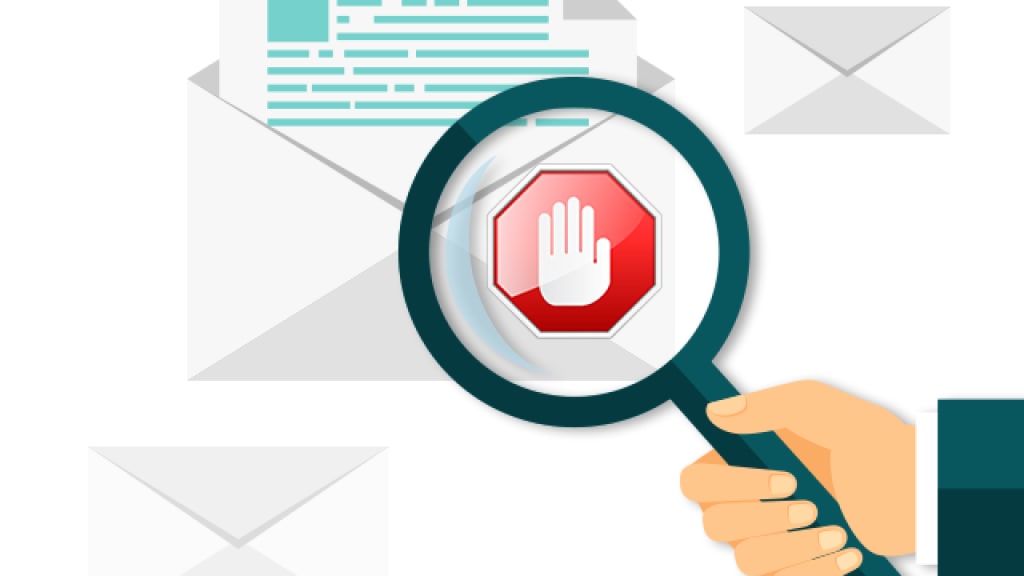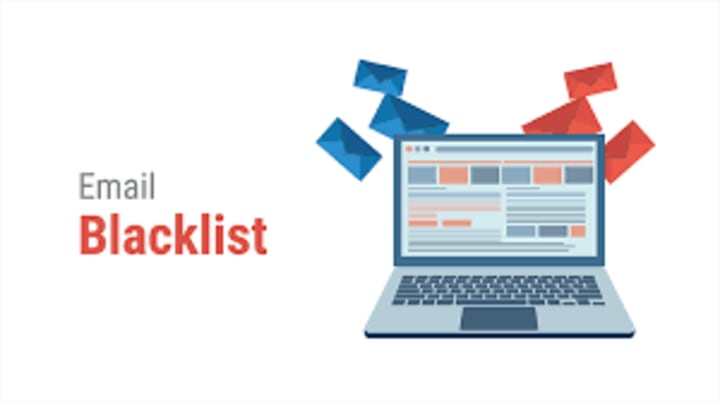Email Blacklist – What to Do if You Are on It?
If you've been blacklisted from sending emails, don't panic.

Email has become an integral part of our personal and professional lives. It is one of the most convenient and reliable modes of communication that enables us to send and receive messages and attachments in a matter of seconds.
However, the email ecosystem is not perfect, and it can be challenging for legitimate senders to get their emails delivered to the intended recipients' inboxes. One of the significant challenges faced by email senders is being blacklisted by email providers, which can have a severe impact on their email deliverability.
In this article, we will discuss email blacklists, how they work, and what you can do if you find yourself on one.
Table of Contents
1. What is an email blacklist?
2. How do email blacklists work?
3. What can cause you to end up on an email blacklist?
4. What are the consequences of being on an email blacklist?
5. What can you do if you are on an email blacklist?
6. Conclusion
What Is an Email Blacklist?
An email blacklist, also known as a blocklist, is a list of email addresses or domains that have been identified as sources of spam or malicious content. Email providers and internet service providers (ISPs) use blacklists to filter out unwanted emails and protect their users from receiving unwanted and potentially harmful messages.

When an email address or domain is added to a blacklist, all emails originating from that address or domain are blocked or marked as spam, preventing them from reaching the intended recipients' inboxes.
How Do Email Blacklists Work?
Email blacklists are created and maintained by organizations that specialize in monitoring and identifying spam and malicious content on the internet. These organizations use a variety of techniques to identify and classify spam, including analyzing email content, tracking the sender's IP address, and monitoring email traffic patterns.
When an email is flagged as spam, it is added to the blacklist, and all future emails from the same sender are either blocked or marked as spam.
There are several popular email blacklists used by email providers and ISPs, including Spamhaus, Barracuda, and SURBL. These blacklists are widely used because they are highly effective at identifying spam and malicious content, and they are updated frequently to keep up with evolving spam tactics.
What Can Cause You to End up on an Email Blacklist?
There are several reasons why your email address or domain may end up on an email blacklist.
The most common reasons include:
Sending unsolicited emails: Sending unsolicited emails, also known as spam, is the most common reason why email senders end up on blacklists. Unsolicited emails are a violation of email marketing regulations, and they can result in severe consequences, including being blacklisted.
Low email engagement: Low email engagement, such as low open rates or click-through rates, can be an indicator of poor email quality. Email providers use engagement metrics to determine the relevance and usefulness of your emails to your subscribers. If your emails consistently show low engagement, they may be marked as spam or blocked.
Malware or viruses: Malware or viruses can infect your computer or email server and send out spam emails without your knowledge. If your email address or domain is found to be the source of malware or virus-related spam, you may end up on a blacklist.
Email authentication issues: Email authentication is the process of verifying the authenticity of an email message to prevent spoofing and phishing attacks. If your email authentication settings are incorrect, your emails may be flagged as spam or blocked.
IP address reputation: Email providers and ISPs monitor the reputation of IP addresses to determine the likelihood that emails originating from that address are spam. If your IP address has a poor reputation, your emails may be blocked or marked as spam.
What Are the Consequences of Being on an Email Blacklist?
Being on an email blacklist can have severe consequences for email deliverability. When your email address or domain is on a blacklist, your emails may be blocked or marked as spam by email providers and ISPs. This means that your emails may not reach the intended recipients' inboxes, resulting in a significant drop in email engagement and sales.

The consequences of being on an email blacklist can include:
Reduced Email Deliverability: When your email address or domain is on a blacklist, your emails are more likely to be blocked or marked as spam by email providers and ISPs. This can result in a significant drop in email deliverability, making it challenging to reach your target audience and achieve your email marketing goals.
Damage to Your Brand Reputation: Sending spam emails can damage your brand reputation and make it challenging to build trust with your subscribers. If your subscribers receive spam emails from your email address or domain, they may mark your emails as spam, resulting in a further decline in email deliverability.
Loss of Revenue: Email marketing is an essential revenue-generating tool for many businesses. When your email deliverability is affected, you may see a significant drop in sales and revenue, making it challenging to achieve your business goals.
Legal Implications: Sending unsolicited emails, also known as spam, is a violation of email marketing regulations, such as the CAN-SPAM Act in the United States. Violating these regulations can result in significant fines and legal implications, making it essential to follow best practices and avoid being blacklisted.
What Can You Do if You Are on an Email Blacklist?
If you find yourself on an email blacklist, there are several steps you can take to improve your email deliverability and get off the blacklist.
Here are some of the things you can do:
Identify the blacklist: The first step in resolving an email blacklist issue is to identify which blacklist you are on. You can use tools like MXToolbox or BlacklistCheck to identify the blacklists your email address or domain is on.
Determine the reason for blacklisting: Once you have identified the blacklist, you need to determine the reason why your email address or domain was blacklisted. This will help you identify the root cause of the issue and take steps to resolve it.
Fix The Issue: Once you have identified the reason for blacklisting, you need to take steps to fix the issue. For example, if you are sending unsolicited emails, you need to stop sending them and follow email marketing best practices to ensure compliance with regulations.
Request Removal from The Blacklist: Once you have fixed the issue, you can request removal from the blacklist. Most blacklists have a removal process that you can follow to request removal. This usually involves filling out a form and providing information about the steps you have taken to resolve the issue.
Monitor Email Deliverability: After you have requested removal from the blacklist, it is essential to monitor your email deliverability closely. It may take some time for your email deliverability to improve, so it is essential to be patient and continue following best practices to ensure compliance with regulations and avoid being blacklisted in the future.
Conclusion
Being on an email blacklist can have severe consequences for email deliverability, brand reputation, revenue, and legal implications.
However, by following best practices, monitoring email engagement metrics, and promptly addressing any issues that arise, you can reduce the risk of being blacklisted and ensure that your emails reach the intended recipients' inboxes.
If you do find yourself on an email blacklist, take the necessary steps to identify the root cause of the issue, fix it, and request removal from the blacklist. By doing so, you can improve your email deliverability and avoid being blacklisted in the future.
#emailmarketing #marketingautomation #digitalmarketing
About the Creator
Raymond McNatt
I've spent over 10 years honing my ability to captivate readers with my words. My specialization in email marketing and digital marketing niches has led to the publication of numerous articles, and essays, in various publications.
Enjoyed the story? Support the Creator.
Subscribe for free to receive all their stories in your feed. You could also pledge your support or give them a one-off tip, letting them know you appreciate their work.






Comments
There are no comments for this story
Be the first to respond and start the conversation.